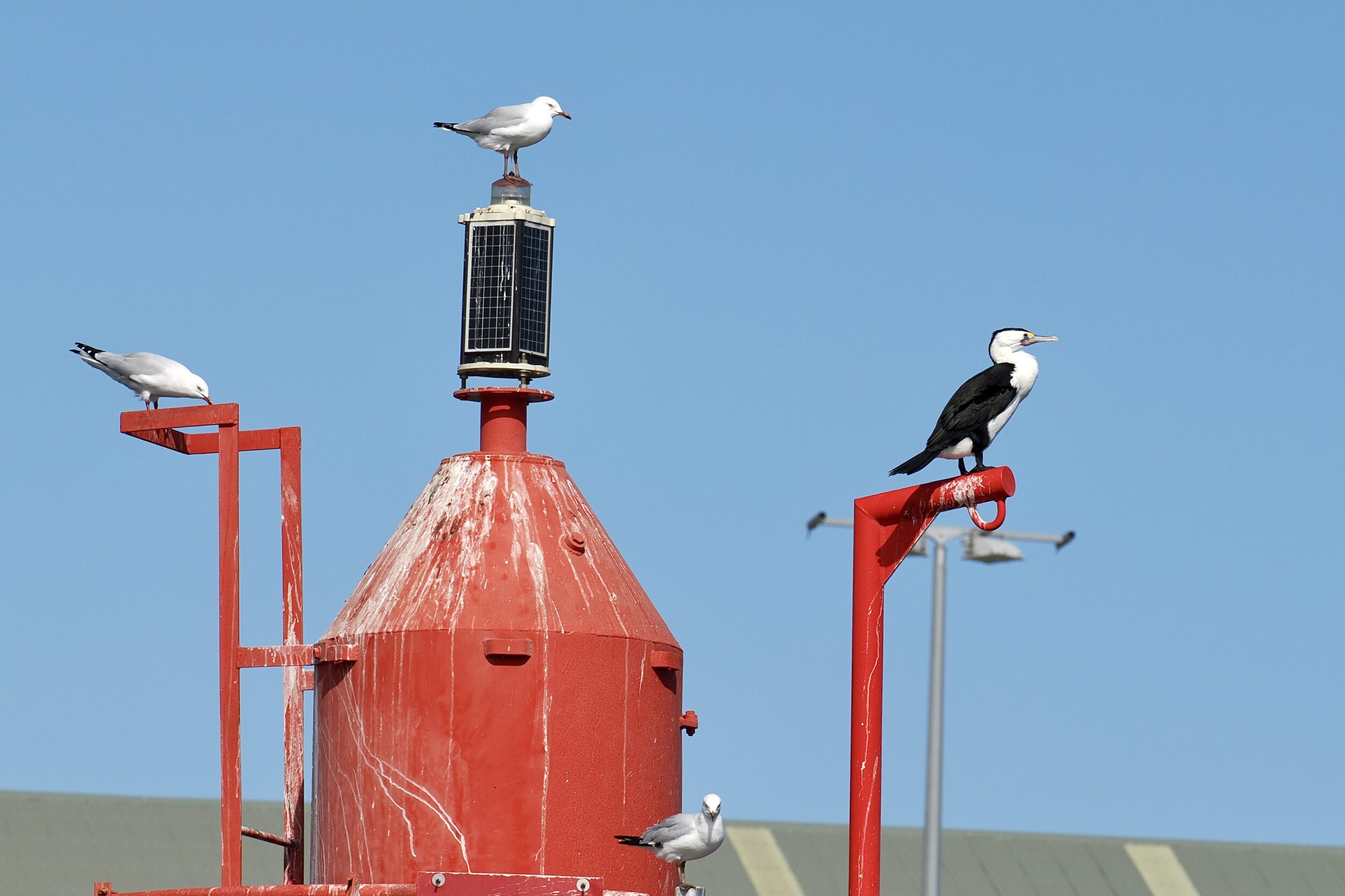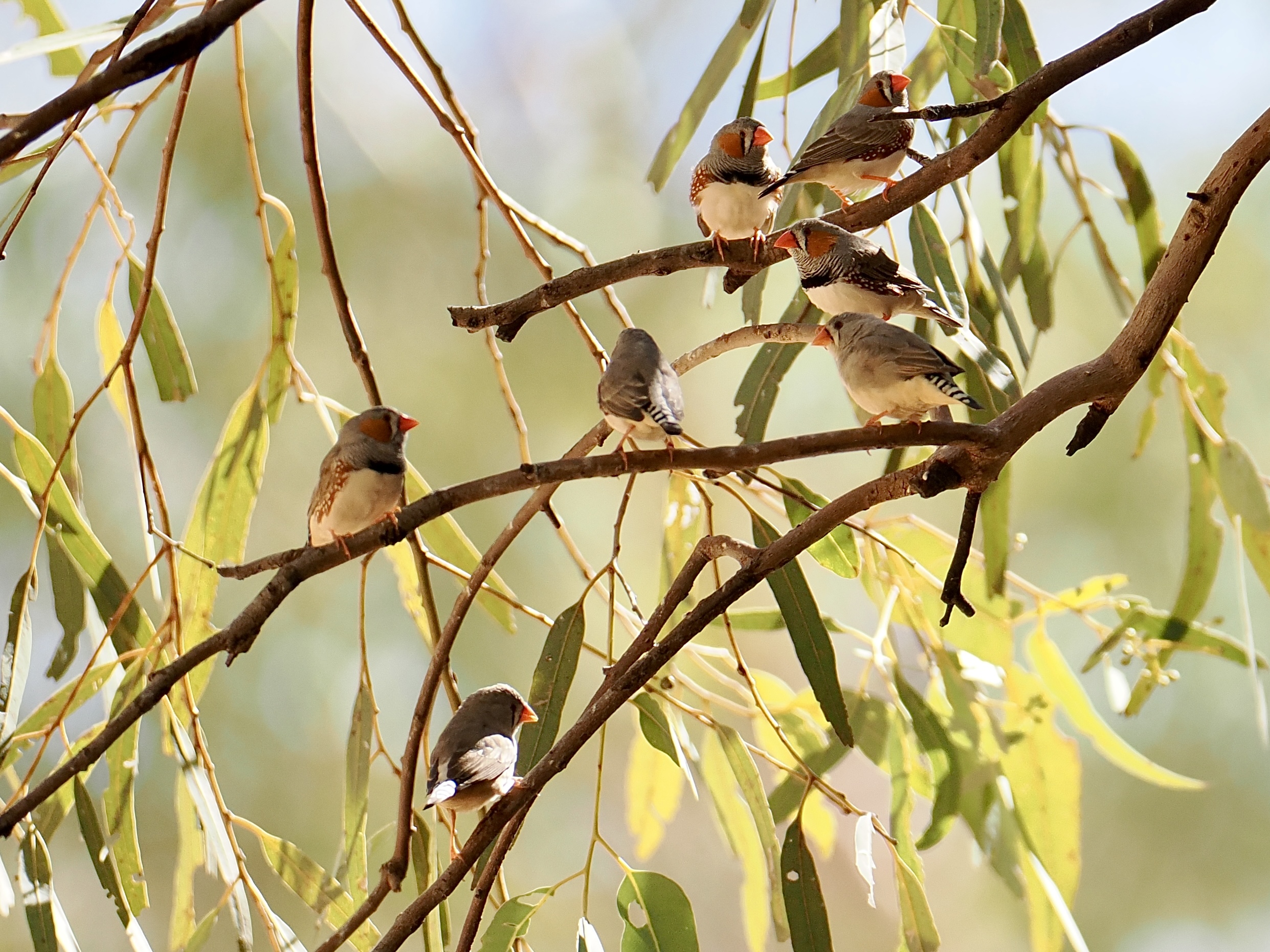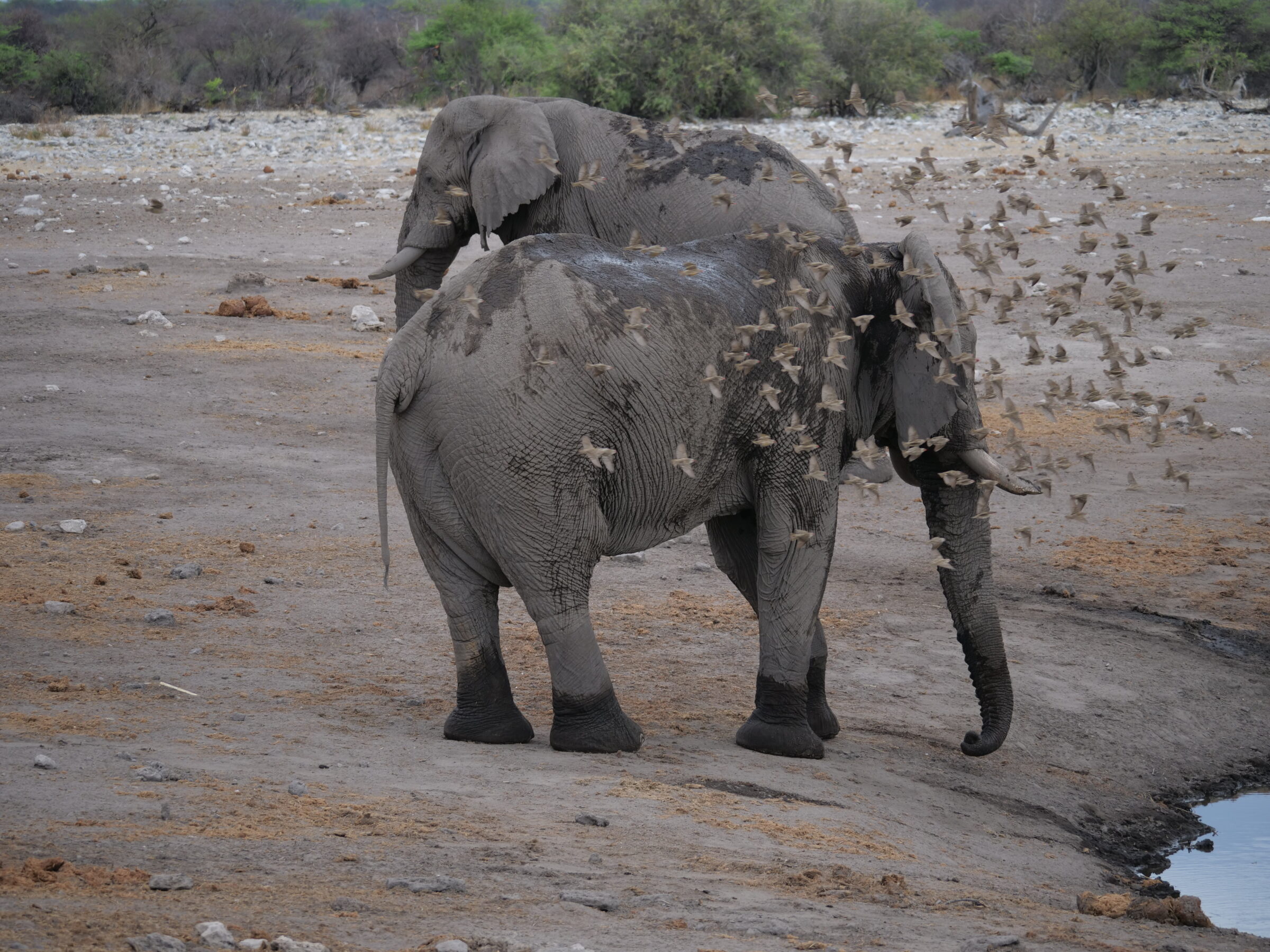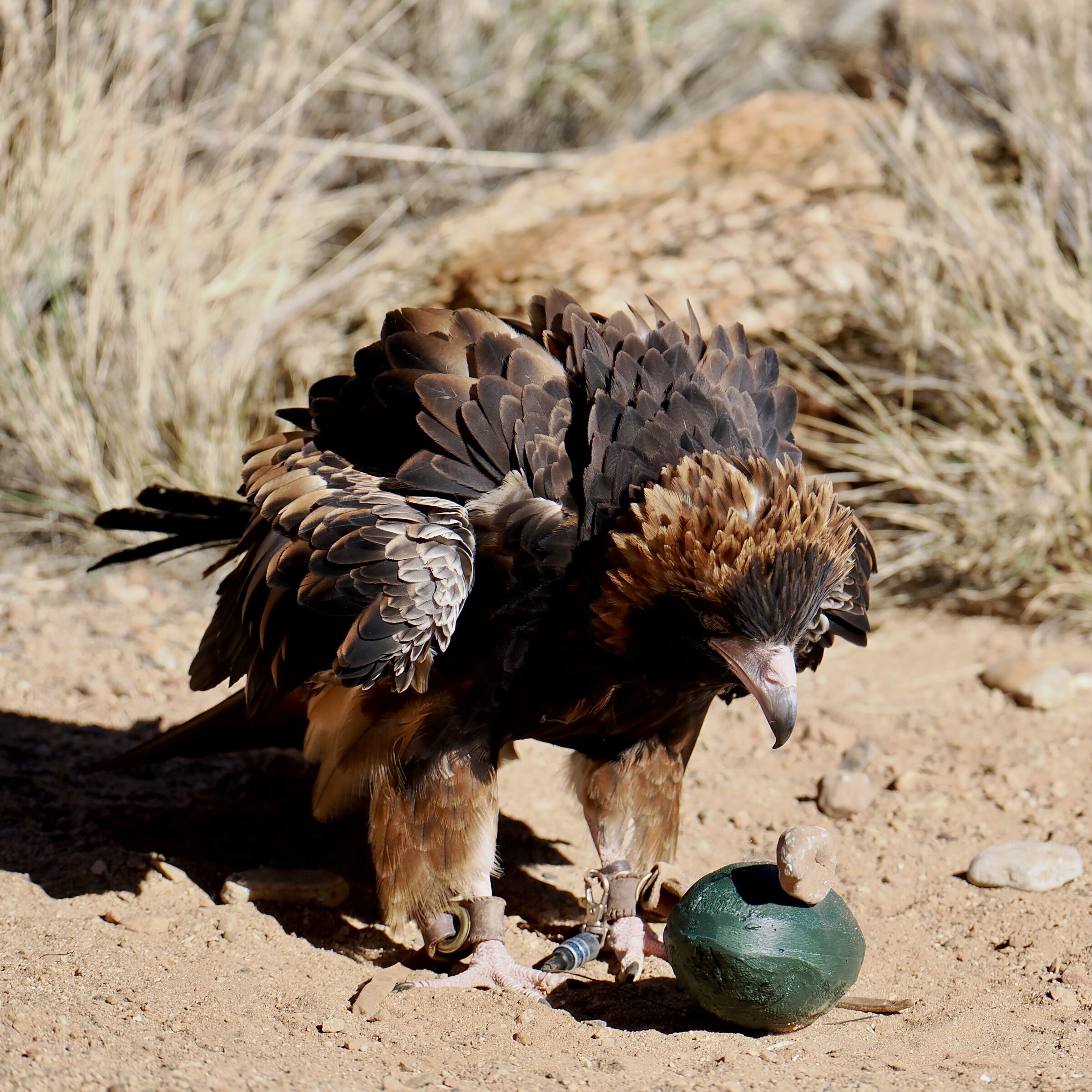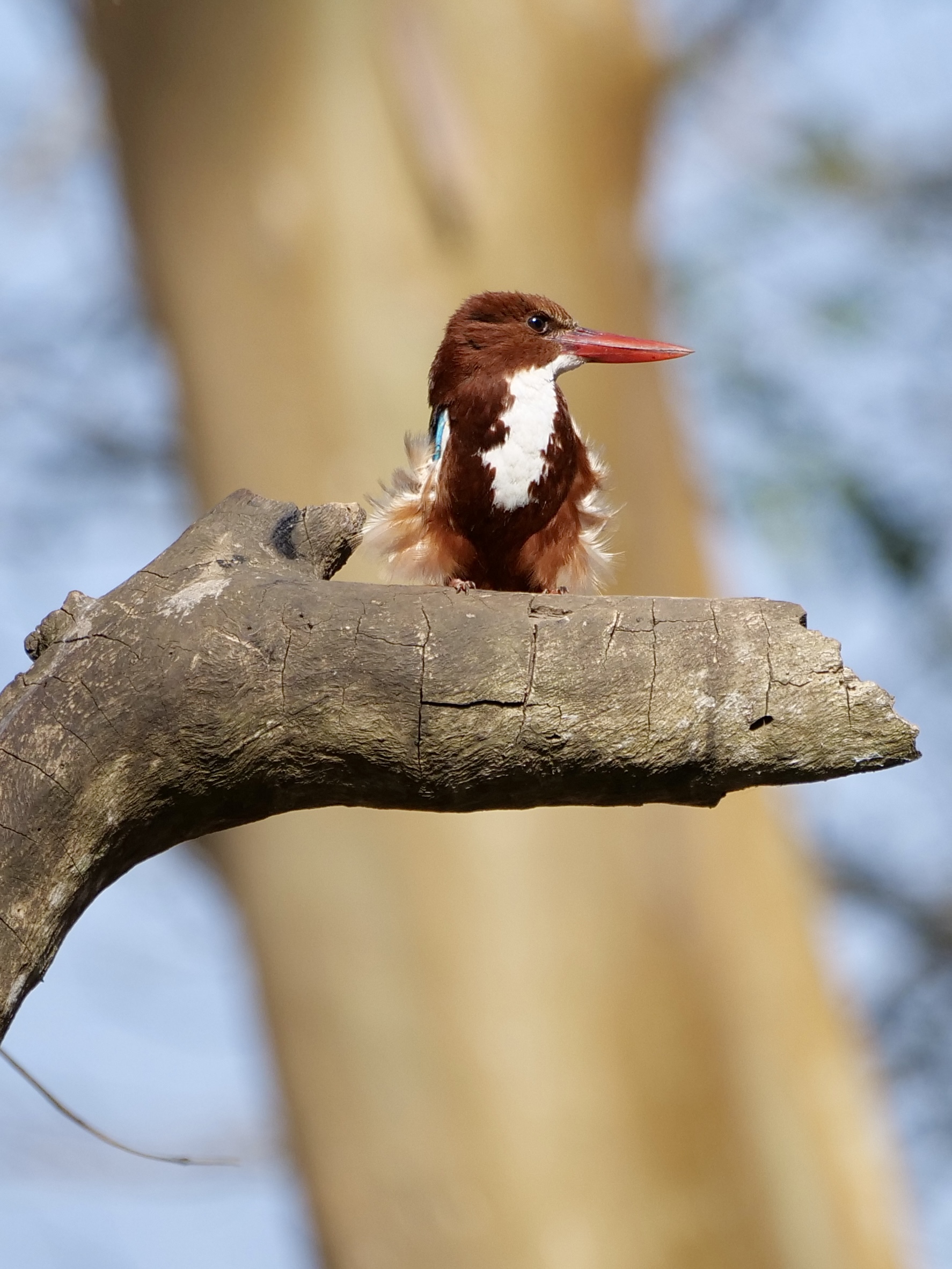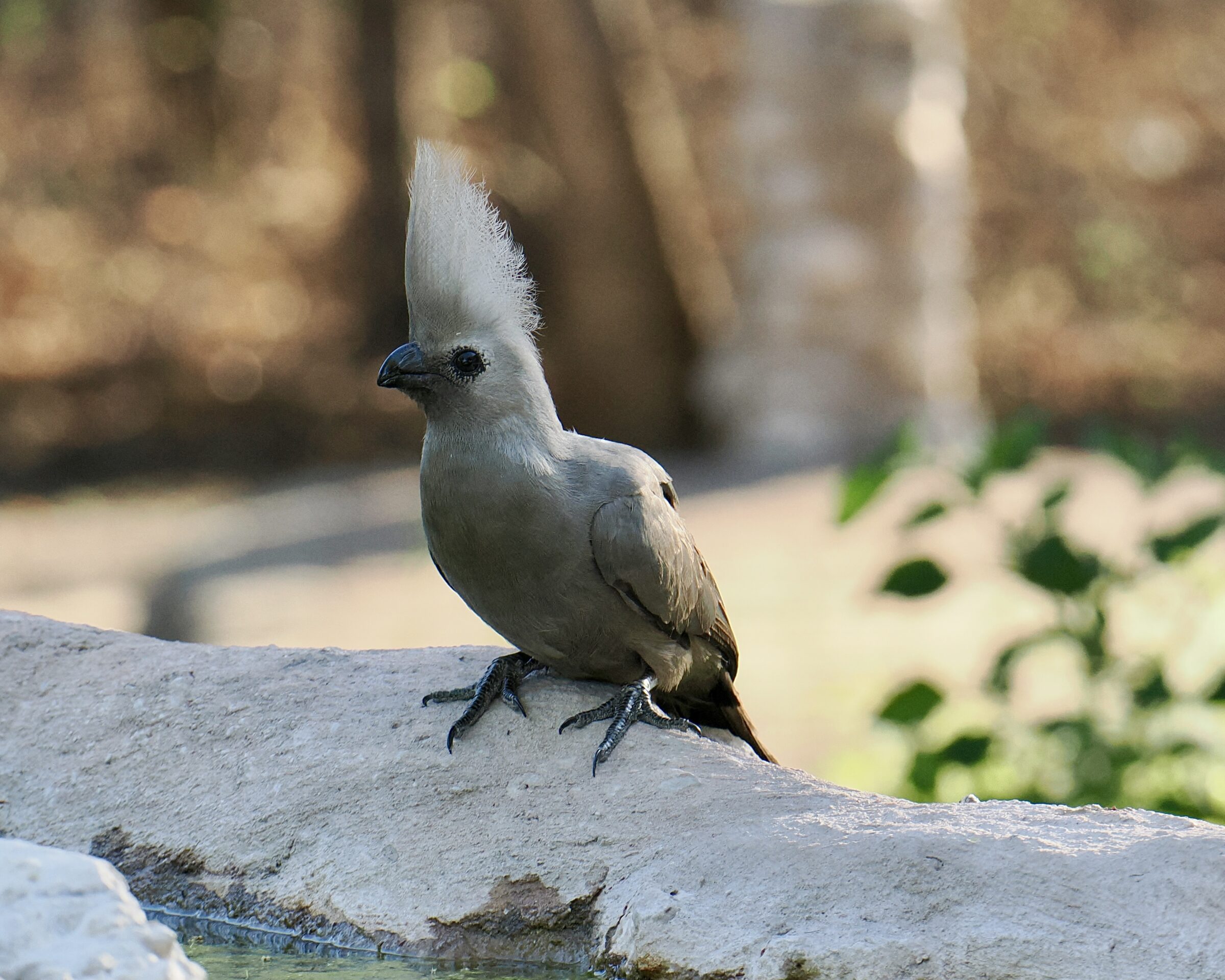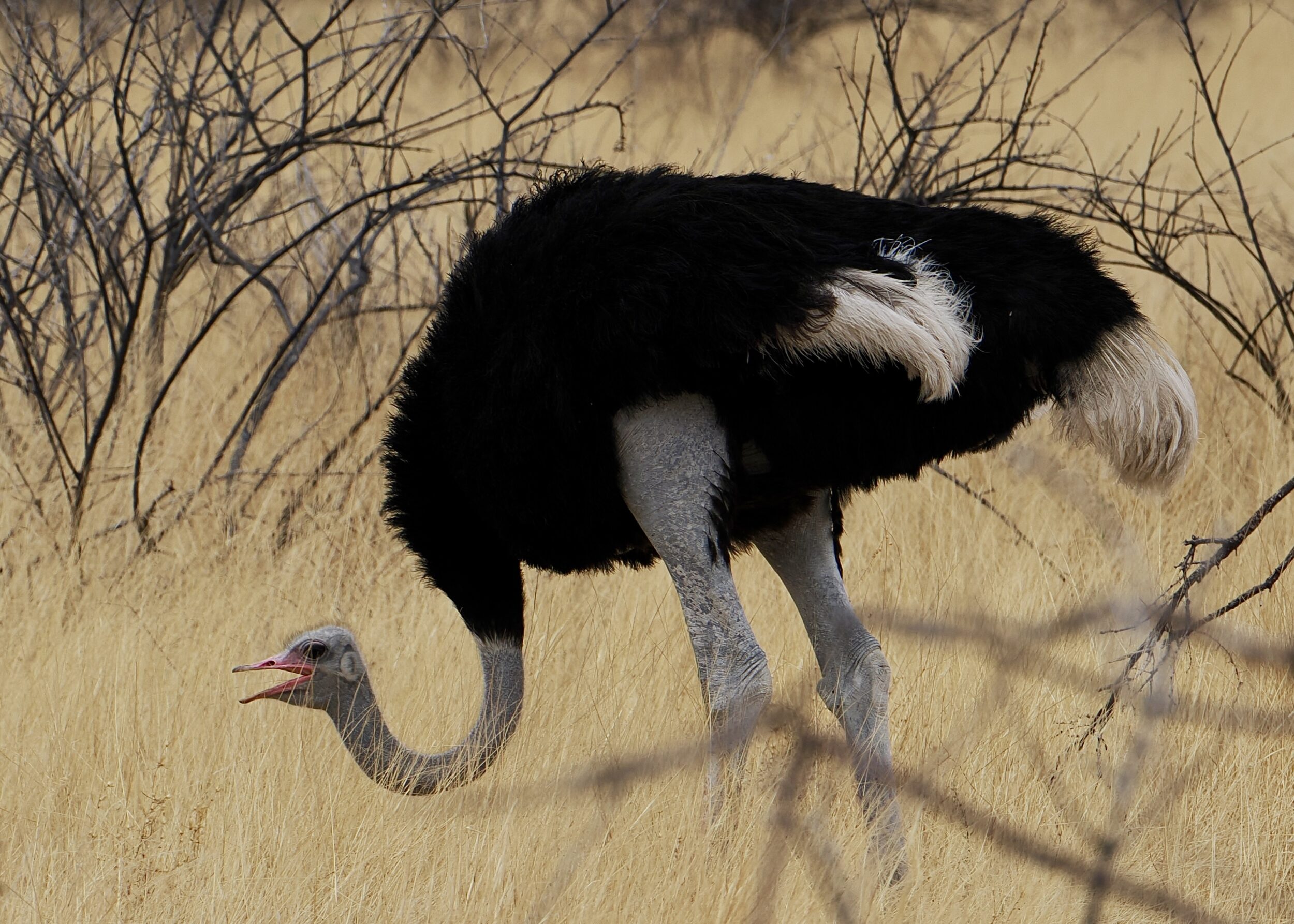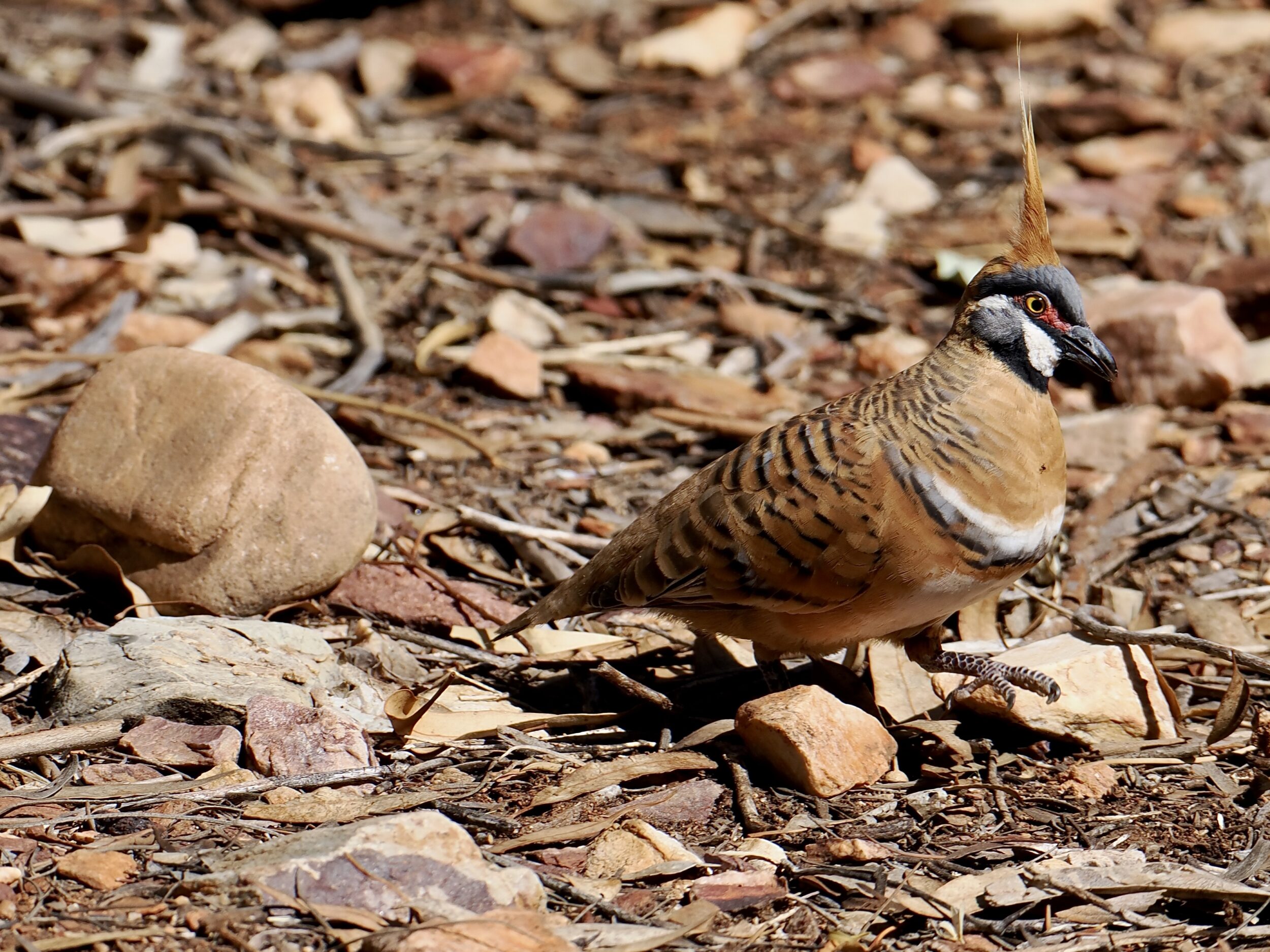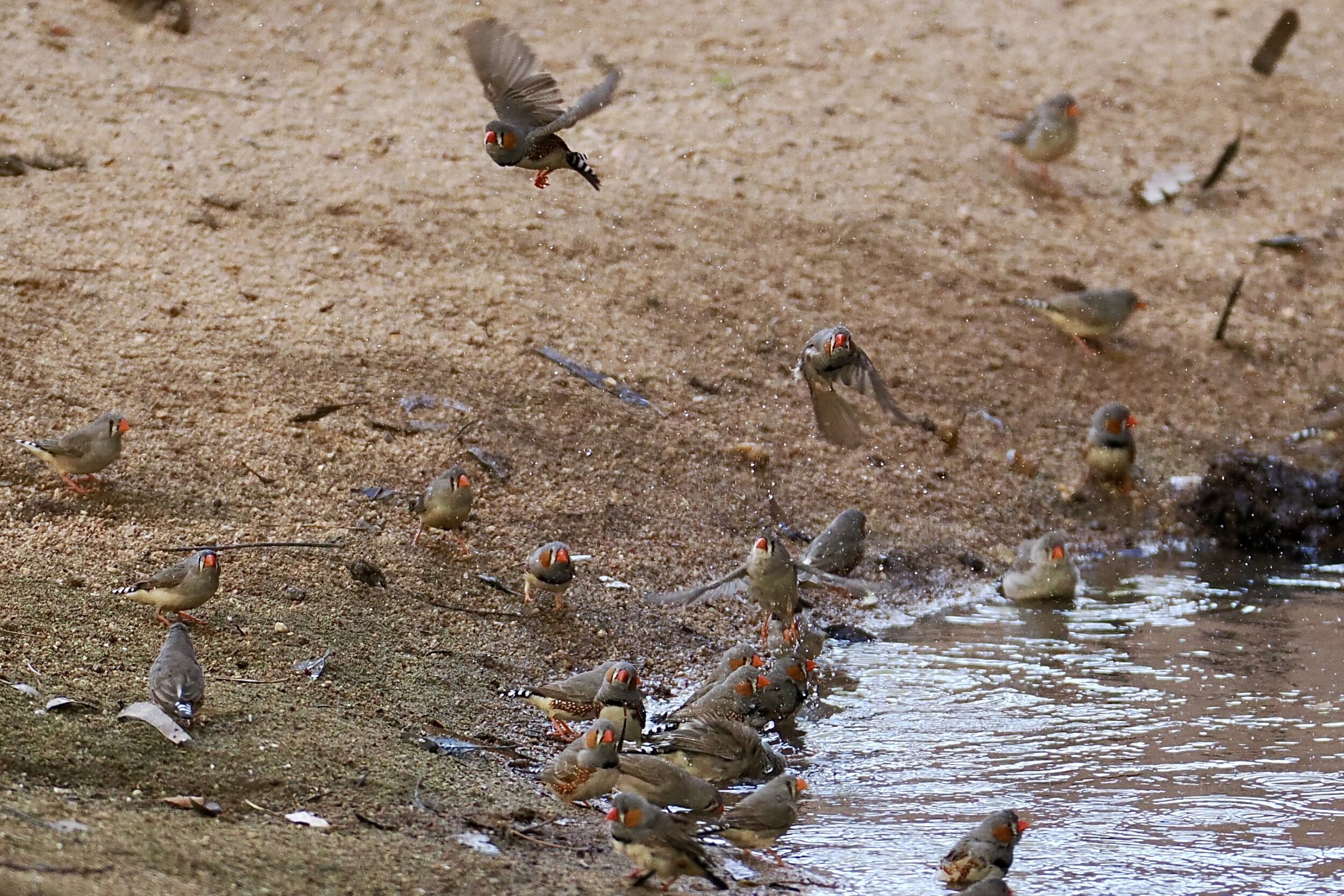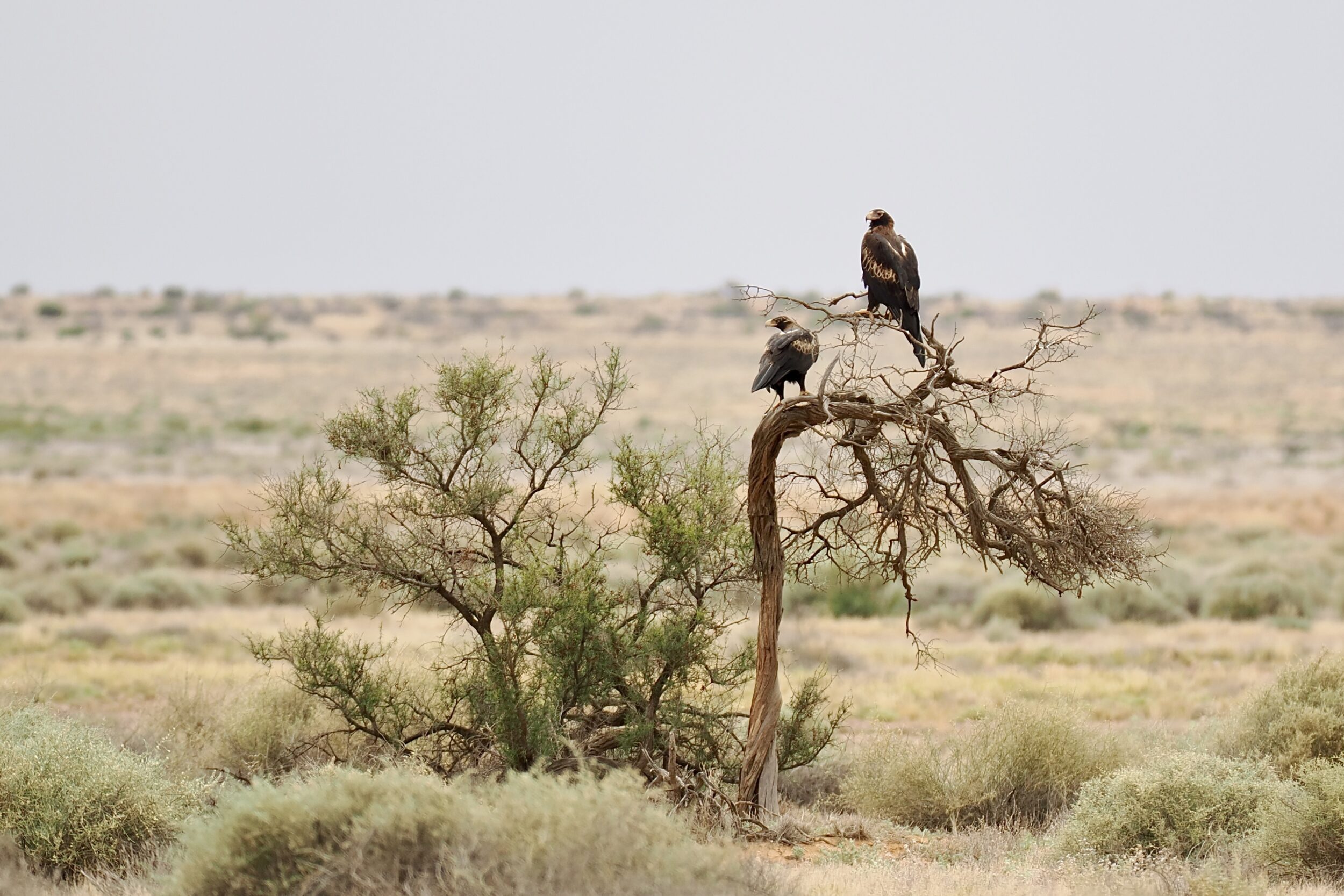The southern edge of the Adelaide International Bird Sanctuary National Park is surprisingly close to Port Adelaide’s actual port, power station and industrial zone.…
Leave a CommentTag: birds
The MacDonnell Ranges are rich in birdlife, including species unfamiliar to most suburban Australians.
This post’s photo may look “peaceful”, but in the middle of the day at Jessie Gap, the Australian zebra finch “action” was in fact a display of incredibly fleet, flurrying, “colour and movement”.
The pictured individuals were just part of a large flock, whose members were repeatedly zapping to and from tree and waterhole.
Jessie Gap is a short drive south-east, from Alice Springs.
Comments closed
This post’s featured image was taken beside a waterhole in Etosha National Park in northern Namibia.
Visible are two members of one species, and more than hundred of another.
A mature African elephant is currently “our” planet’s most massive terrestrial animal.
Imagine this:
On one side of a colossal pair of scales you place one of the pictured elephants.
In order to balance those scales you would then need at least forty thousand of the pictured birds…and if a substantial flock of red queleas was present, forty thousand would not be an unusually high number!
Comments closed
Until Charles Darwin observed finches at work in the Galapagos, many members of our own species had believed that tool-usage was a uniquely human ability/trait.
The known list of non-human tool-users is now enormous.
It includes many mammals (not only primates), birds, fish, cephalods, reptiles, and insects.
One of them is an Australian raptor which deploys rocks to crack emu eggs.
You may be surprised to know that the pictured individual did not learn the technique from his or her parents, nor did this captive bird’s human “keepers” train him or her to do it.
One Comment
Members of the kingfisher family are typically very confident; these predatory birds are not much preyed-upon.
Fish are not invariably their primary prey, and not all kingfishers live near rivers or lakes.
Pictured is the most ubiquitous of Asia’s kingfishers, Halcyon smyrnensis – the white-throated kingfisher.
By itself, this perky individual’s demeanour was almost enough to qualify it for inclusion in this series…
Comments closed
I dislike anthropomorphism, especially when it “cutesifies” animals that are not cute.
I wish we humans would learn to appreciate other animals in their own right, as themselves, rather than wilfully misreading their behaviours and facial expressions.
For instance, quokkas’ characteristic facial shapes/expressions do not in fact signify happiness.
That said, I am sometimes hugely amused by a particular animal’s fortuitous resemblance to a particular, famous/infamous human…or human-made humanoid.
One crisp Namibian morning I saw and heard a very loud local bird; its common name refers to its alarm call.
Why would a “Go-away bird” remind me of England’s self styled “Queen of Romance Fiction”?
Comments closed
The ostrich is the biggest living bird.
It is numero uno in other respects, too.
Intelligence is definitely not one of them.
To a human – this human, at least – the ostrich is one of “our” planet’s quirkiest birds.
Comments closed
Strangely under-emphasised in most NT publicity, advertorials – and even in genuinely independent media coverage – but true:
Central Australia’s birdlife is abundant and oft-spectacular.
Comments closed
This post’s photo is far-from-perfect.
Nonetheless, I think/hope it conveys a sense of just how fleet-and-flurrying (and splashy) is the to-and-fro of zebra finches at a drinking/bathing “station”.
In arid regions such “stations” can themselves appear and vanish, very rapidly.
The pictured pool sat at the base of the eastern wall of Jessie Gap on 14 June 2023. (photo is copyright Doug Spencer. Jessie Gap is a short drive from Alice Springs)
Musically, I agree with the listener who suggested that if J.S. Bach had heard Chris Thile play, there’d be a set of Bach mandolin suites.
Comments closed
Today’s photo shows a repeatedly-pleasing aspect of our June 2023 “outback” trip: it included a surprisingly large number of sightings of Australia’s largest raptor.
One Comment